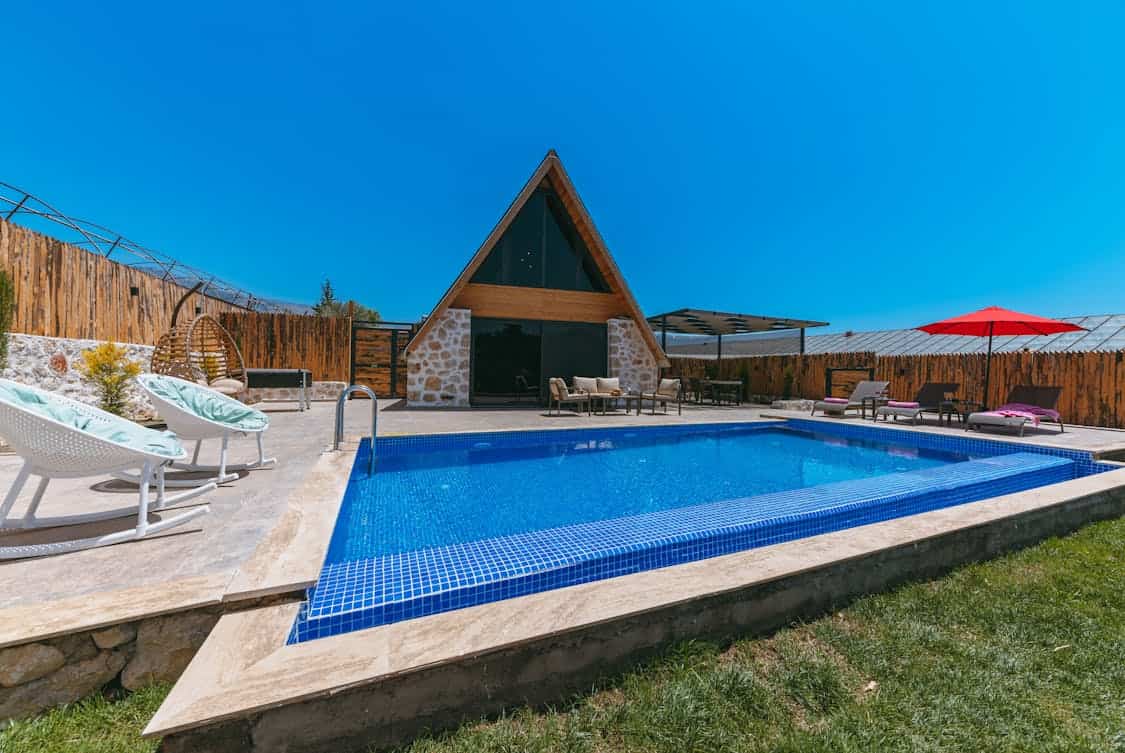Building a swimming pool can feel like a monumental task, often accompanied by a hefty price tag. Many homeowners dream of having their own backyard oasis, but the thought of expenses can be daunting.
This article breaks down practical steps to help you construct an affordable swimming pool without sacrificing quality or enjoyment.
Assessing Your Budget
Before diving into the process, it’s crucial to evaluate your finances. Determine how much you’re willing to spend, and factor in all potential costs.
This includes not just construction but maintenance, utilities, and any accessories you might want. Create a spreadsheet to compare various pool types, materials, and designs.
Set aside a contingency fund—typically around 10-15% of your total budget. Unexpected expenses can surface, and having that cushion can alleviate stress.
Choosing the Right Type of Pool

The first step in the journey is deciding on the type of pool that fits both your lifestyle and your budget. There are several options:
- Above-Ground Pools: Generally less expensive and quicker to install, above-ground options come in various shapes and sizes. They offer a great way to enjoy swimming without a large financial commitment.
- In-Ground Pools: These pools offer more customization and can add value to your property. However, they tend to be costlier. Vinyl pools can be a more budget-friendly choice compared to concrete or fiberglass.
- Natural Pools: An eco-friendly option, these rely on plants and natural filtration systems. While the initial investment may be higher, maintenance costs can be lower over time.
Each option has its pros and cons, so weigh these factors before making your decision.
Permits and Regulations
Once you’ve settled on a pool type, check local regulations. Many areas require permits for pool construction. Understanding these requirements early can save you from unexpected delays and fines.
Reach out to your local zoning office to gather information about restrictions in your area. This can include setbacks from property lines, safety barriers, and other safety regulations that must be adhered to.
DIY vs. Hiring a Contractor
Deciding whether to build the pool yourself or hire a contractor is a significant choice. A DIY project can save you money, but be prepared to invest time and effort.
If you have some construction skills or know someone who does, this might be your best bet to cut costs.
If you opt for a contractor, get multiple quotes. Each contractor might have a different approach and pricing. Look for those with good reviews and ask about their experience with budget projects.
If you’re considering a professionally built pool, consulting experienced swimming pool builders in the Gold Coast can help you strike the right balance between affordability and quality.
Material Selection
Your choice of materials will significantly impact the overall cost of your pool. For an in-ground pool, options include:
- Vinyl Liner: Cost-effective and available in various patterns and colors. It’s easy to install but may require replacement every 5-10 years.
- Concrete: Durable and customizable, yet it often comes at a higher price. Prepare for higher maintenance costs due to surface roughness.
- Fiberglass: Quick to install and low maintenance, fiberglass pools can be pricier upfront but save money in the long run due to durability.
Keep in mind that maintenance costs vary by material, so consider long-term expenses when making your selection.
Pool Design and Size
The design and size of your pool will influence both the initial cost and ongoing expenses. A larger pool requires more materials, which increases the budget.
Consider a smaller or simpler design that still meets your swimming needs. Rectangular pools are often easier and cheaper to build than more complex shapes. Additionally, decide on features that are essential versus those that are nice to have.
Energy Efficiency
Energy efficiency is a growing concern for many homeowners. Investing in energy-efficient pumps, heaters, and lighting can lead to significant savings over time. Look for pumps with variable speeds, which can operate more efficiently than single-speed models.
Solar pool covers can also help retain heat in cooler months and reduce heating costs. These simple additions can make a big difference in your utility bills.
Landscaping Around the Pool
Creating a pleasant environment around your pool doesn’t have to break the bank. Start with simple landscaping options like grass or gravel. Planting native plants can also reduce water consumption and maintenance costs.
Consider building a deck or patio area, but keep it basic; elaborate designs can quickly add to your costs. You can always enhance your outdoor space as your budget allows in the future.
Maintenance Planning
Regular maintenance is key to enjoying your pool for years to come. Factor in the costs of cleaning supplies, chemicals, and any necessary tools.
If you’re opting for a DIY approach, learn about the necessary maintenance tasks, such as routine cleaning and balancing chemicals.
Alternatively, hiring a service can alleviate the burden but will add to your monthly expenses. Explore your options to find what works best for your lifestyle.
Financing Options
If your budget is tight, look into financing options. Many financial institutions offer loans specifically for home improvement projects. Some contractors may offer financing plans to help alleviate upfront costs.
Research various options to find the one that best suits your situation. Remember to read the fine print and evaluate interest rates and repayment terms before committing.
Pool Ownership Costs
Owning a pool involves ongoing costs that can sometimes catch homeowners off guard. These include:
- Utilities: Water and electricity are often the most significant ongoing costs.
- Chemicals: Regularly purchasing pool chemicals for maintenance can add up quickly, so budget accordingly.
- Repairs: Pools may require repairs over time, from pumps to liners. Setting aside funds for future repairs is wise.
Understanding these costs is essential to maintain financial stability after the pool is built.
Seasonal Considerations
If you live in an area with seasonal weather changes, plan for winterization. This will protect your investment during colder months and help extend the life of your pool.
Investing in a quality cover can prevent debris from accumulating and reduce cleaning time in the spring. Budget for any seasonal maintenance tasks, which may involve hiring professionals or purchasing supplies.
Community Resources
Local community resources can offer invaluable assistance. Many homeowners’ associations or community centers host workshops or provide resources for building and maintaining pools. Connecting with others who have gone through the process can offer insights and tips.
Online forums and social media groups can also be a goldmine of information. Engaging with experienced pool owners can help you avoid common pitfalls.
Embracing Creativity
Finally, don’t be afraid to get creative. Use materials you already have on hand, or repurpose items for poolside decor. This approach can significantly cut costs while adding a personal touch to your space.
Sometimes, a little ingenuity can go a long way. Consider crafting your own lounge chairs, or using reclaimed wood for decking, which can be both eco-friendly and cost-effective.
By following these steps, you can build a swimming pool that enhances your home without draining your wallet. Enjoy the process and the journey toward creating your own backyard paradise!









Leave a Comment